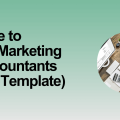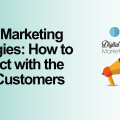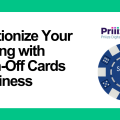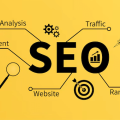Educational email courses have emerged as one of the most powerful tools in the modern learning landscape, transforming how educators deliver content and how students consume knowledge.
As the online learning industry continues its remarkable growth trajectory, with estimates showing that between 2018 and 2026, the online learning industry will grow by as much as 9.1% each year, educational email courses are becoming increasingly central to successful digital education strategies.
Unlike traditional online courses that require students to log into learning platforms, educational email courses deliver bite-sized, structured learning directly to learners’ inboxes.
This innovative approach leverages the power of email marketing to create engaging, sequential learning experiences that fit seamlessly into busy schedules.
With 64% of students currently engaging with online learning, with predictions suggesting this could reach 70% by 2025, understanding how to effectively implement educational email courses is crucial for educators, institutions, and businesses looking to capitalize on this growing trend.
Keep reading to learn how educational email courses can help your business boost it subscribers and sales.
Key Takeaways
- Strategic Content Design: Structure content for progressive learning while maintaining high engagement through storytelling, interactivity, and practical application opportunities.
- Technical Excellence: Ensure flawless delivery through mobile optimization, deliverability best practices, and seamless user experiences across all devices and email clients.
- Data-Driven Optimization: Continuously improve course effectiveness through careful measurement of both traditional email metrics and learning-specific outcomes like course completion rates and knowledge retention. Opt-in rates are 30%, some are higher at 70%.
- Community Integration: Build learning communities that extend beyond individual email interactions to create supportive environments that enhance learning outcomes and course completion rates.
What Are Educational Email Courses and Why They Matter
Educational email courses are structured learning programs delivered through a series of emails over a predetermined period. Each email contains educational content, resources, actionable insights, and sometimes exercises designed to help users achieve specific learning objectives.
These courses can range from short 5-day or 7-day programs to comprehensive 12-week certification courses, in some cases.
The effectiveness of educational email courses lies in their accessibility and convenience. Students don’t need to remember to log into a platform or navigate complex interfaces.
Instead, learning content arrives directly in their inbox, creating a consistent touchpoint that encourages regular engagement with the material.
Key Benefits of Educational Email Courses
Understanding why educational email courses have become so popular requires examining their core advantages over newsletters and quite frankly, traditional learning methods. These benefits explain why both educators and learners are increasingly choosing email-based education.
Increased Accessibility and Convenience
One of the primary advantages of educational email courses is their universal accessibility. Email is available on virtually every device, from smartphones to tablets to desktop computers. This means learners can access course content anywhere, anytime, without requiring special software or high-speed internet connections.
Higher Engagement Rates
Email marketing in the education sector shows impressive performance metrics. Education emails have an average open rate of 20%-30%, significantly higher than many other industries. This high engagement rate translates to better learning outcomes and course completion rates.
Cost-Effective Delivery Method
Compared to traditional learning management systems or video hosting platforms, email courses require minimal technical infrastructure. This makes them an attractive option for educators and organizations with limited budgets or technical resources.
Personalization Opportunities
Modern email platforms allow for sophisticated personalization and segmentation. Educators can tailor content based on learner behavior, preferences, and progress, creating more relevant and effective learning experiences.
The Science Behind Email-Based Learning
Educational email courses leverage several psychological principles that enhance learning effectiveness. Let’s explore each one.
Spaced Repetition
By delivering content over time rather than all at once, email courses utilize spaced repetition, a learning technique proven to improve long-term retention. This approach helps learners absorb and retain information more effectively than cramming sessions.
Microlearning Principles
Each email contains focused, bite-sized content that can be consumed in 5-15 minutes. This microlearning approach aligns with how modern learners prefer to consume information, especially given busy schedules and shortened attention spans.
Commitment and Consistency
When learners subscribe to an educational email course, they make a commitment to learning. The regular delivery schedule creates a sense of accountability and routine that supports consistent learning habits.
Types of Educational Email Courses
The versatility of educational email courses allows them to serve diverse learning needs across different contexts and industries. Understanding these main categories helps educators choose the right format for their specific objectives and audience.
Skill-Based Courses
These courses can focus on developing specific skills such as writing, marketing, coding, or design. They may include practical exercises, templates, and real-world applications that learners can implement immediately.
Certification Programs
More comprehensive programs that lead to professional certifications or credentials. These courses often include assessments, peer interactions, and formal recognition upon completion.
Onboarding Sequences
Educational email courses designed to introduce new users, customers, or employees to products, services, or company cultures. These courses combine education with engagement to improve user adoption and satisfaction.
Professional Development Series
Ongoing educational content focused on career advancement, leadership skills, industry trends, and professional growth. These courses often feature guest experts and case studies from successful professionals.
Email Marketing Strategies for Educational Content
Creating successful educational email courses requires understanding both educational principles and email marketing best practices. The integration of these two disciplines is what makes educational email courses so effective.
Content Structure and Sequencing
The foundation of any successful educational email course lies in how content is organized and delivered. Proper sequencing ensures learners can build knowledge progressively while maintaining engagement throughout the course journey.
Progressive Complexity
Structure your educational email course content to build from foundational concepts to more advanced topics. Each email should build upon previous lessons while introducing new material at an appropriate pace.
Clear Learning Objectives
Every email should have clear, measurable learning objectives. Tell learners exactly what they’ll know or be able to do after reading each lesson. This clarity helps maintain engagement and provides a sense of progress.
Interactive Elements
You may include checklists, quizzes, reflection questions, practical exercises, videos, or discussion prompts in each email. Interactive elements increase engagement and help learners apply what they’ve learned.
Personalization and Segmentation
Modern learners expect customized experiences that cater to their individual needs, preferences, and learning styles. Email marketing platforms offer sophisticated tools that make personalization at scale not just possible, but essential for course success.
Learning Style Adaptation
You can segment learners based on their preferred learning styles (visual, auditory, kinesthetic) and customize content delivery accordingly. Visual learners might receive more infographics and diagrams, while kinesthetic learners get more hands-on exercises.
Progress-Based Customization
Depending on the extent of your educational email course (most are used to upsell an offer), you can track learner progress and engagement to customize future content. Struggling or disengaged learners might receive additional resources or simplified explanations, while advanced learners could access bonus materials or accelerated tracks.
Industry-Specific Content
If your educational email course serves multiple industries, segment content based on learner backgrounds to provide relevant examples, case studies, and applications.
Technical Optimization
The technical foundation of your educational email course determines whether your carefully crafted content actually reaches and engages learners. These optimization strategies ensure maximum deliverability and user experience.
Mobile Responsiveness
With over 60% of emails opened on mobile devices, ensuring your educational content displays properly on smartphones and tablets is crucial. Use responsive design templates and test across multiple devices.
Delivery Timing
Analyze your audience’s email engagement patterns to determine optimal send times. Educational content often performs well when sent in the morning or early evening when learners have dedicated time for personal development.
Email Frequency
Balance providing enough content to maintain momentum with avoiding email fatigue. Most educational email courses are sent once per week. However, you may send content 2-3 times per week, though this varies based on course intensity and learner preferences.
Best Practices for Creating Engaging Educational Email Courses
Creating educational email courses that truly engage and educate requires balancing pedagogical principles with email marketing best practices. These proven strategies will help you develop courses that learners not only complete but recommend to others.
Content Creation Guidelines
Exceptional educational content doesn’t happen by accident—it requires systematic approach and adherence to proven guidelines that enhance learning outcomes while maintaining high engagement levels.
Storytelling Integration
Incorporate storytelling elements into your educational content to make complex concepts more memorable and engaging. Use case studies, personal anecdotes, and real-world examples to illustrate key points.
Visual Design Elements
Even though email has limitations compared to web pages, you can still create visually appealing educational content. Use headers, bullet points, images, and white space effectively to improve readability and engagement.
Actionable Takeaways
Every email should include specific, actionable steps that learners can implement immediately. This practical approach helps learners see immediate value and builds confidence in the course content.
Engagement Strategies
Keeping learners actively involved throughout an educational email course requires deliberate strategies that create interaction, community, and ongoing motivation. These approaches transform passive content consumption into active learning experiences.
Community Building
Create opportunities for learners to connect with each other through dedicated Facebook groups, Slack channels, or regular Q&A sessions. Community engagement significantly improves course completion rates and learning outcomes.
Progress Tracking
Depending on the style of your educational email course, you can implement systems that allow learners to track their progress through the course. This might include progress bars in emails, completion certificates, or milestone celebrations.
Feedback Loops
Regularly solicit feedback from learners about course content, pacing, and delivery. Use this feedback to continuously improve your educational email course and better serve future learners.
Measuring Success: Analytics and Optimization
Data-driven decision making is crucial for developing educational email courses that deliver real results. By tracking the right metrics and continuously optimizing based on insights, you can create increasingly effective learning experiences.
Key Performance Indicators
Measuring the success of educational email courses requires tracking metrics that go beyond traditional email marketing KPIs to include learning-specific outcomes and long-term impact measurements.
Open Rates and Click-Through Rates
Monitor standard email metrics to gauge initial engagement. The average open rate for email marketing campaigns is 25.10%, while educational content often performs above this benchmark.
Course Completion Rates
Track what percentage of enrolled learners complete the entire educational email course. Industry benchmarks vary, but completion rates of 40-60% are considered strong for email-based courses.
Learning Outcomes Assessment
Depending on the type of educational email course, you can implement pre- and post-course assessments to measure actual learning gains. This data helps demonstrate course effectiveness and identify areas for improvement.
Long-term Engagement
Monitor how learners apply course concepts weeks or months after completion. Follow-up surveys and case studies provide valuable insights into long-term impact.
Optimization Strategies
Continuous improvement is essential for maintaining high-performing educational email courses. These optimization approaches help you refine content, delivery, and overall course effectiveness based on real learner data and feedback.
A/B Testing
Continuously test different subject lines, content formats, send times, and course structures to optimize performance. Even small improvements can significantly impact overall course success.
Content Refinement
Regularly update course content based on learner feedback, industry changes, and performance data. Keep content fresh and relevant to maintain high engagement levels.
Technology Integration
Explore integration with learning management systems, CRM platforms, and analytics tools to enhance course delivery and tracking capabilities.
The Future of Educational Email Courses
As we look toward the future, several trends are shaping the evolution of educational email courses. Let’s examine each one.
Artificial Intelligence Integration
AI-powered personalization will enable even more customized learning experiences, with content automatically adapted based on individual learning patterns, preferences, and progress.
Multimedia Enhancement
As email clients become more sophisticated, educational email courses will increasingly incorporate interactive elements, embedded videos, and rich media experiences while maintaining accessibility across all devices.
Integration with Emerging Technologies
Virtual reality, augmented reality, and other emerging technologies will find their way into educational email courses, providing immersive learning experiences delivered through familiar email interfaces.
Common Challenges and Solutions of Educational Email Courses
Every educational email course creator faces predictable obstacles that can impact course effectiveness and learner satisfaction. Understanding these challenges and their proven solutions helps you proactively address issues before they affect your learners.
Technical Challenges
The technical aspects of email delivery and formatting present unique challenges that differ from web-based courses. These issues require specific solutions to ensure consistent, professional course delivery.
Email Deliverability
Ensuring educational emails reach learners’ inboxes requires attention to sender reputation, authentication protocols, and content optimization. Work with reputable email service providers and follow deliverability best practices.
Content Formatting
Email clients display content differently, making consistent formatting challenging. Use email-safe HTML, test across multiple clients, and provide fallback options for complex formatting.
Engagement Challenges
Beyond technical hurdles, maintaining subscriber/learner engagement throughout an email-based course presents unique challenges that require creative solutions and strategic thinking to overcome effectively.
Email Fatigue
Prevent learners from becoming overwhelmed by carefully planning email frequency, providing clear expectations about course duration and intensity, and offering easy unsubscribe options.
Lack of Interactivity
While email has limitations compared to web-based courses, creative educators find ways to encourage interactivity through reply-to prompts, social media integration, and companion resources.
Implementation Strategy for Educational Organizations
Successfully launching educational email courses requires careful planning, appropriate resource allocation, and systematic execution. This strategic approach ensures your course achieves its educational objectives while delivering strong return on investment.
Getting Started
The initial phase of developing educational email courses involves foundational decisions that will impact every aspect of your program. Taking time to properly plan these elements prevents costly mistakes and sets the stage for long-term success.
Define Learning Objectives
Begin by clearly defining what learners should achieve through your educational email course. These objectives will guide all content creation and structural decisions.
Choose Your Platform
Select an email marketing platform that supports educational course features such as automation, segmentation, and analytics. Popular choices include Kit, Mailchimp, and ActiveCampaign.
Develop Content Calendar
Create a detailed content calendar that outlines each email’s topic, learning objectives, and delivery schedule. This planning ensures consistent quality and helps manage production timelines.
Scaling Your EEC Email Marketing Program
As your educational email course program grows and demonstrates success, scaling becomes both an opportunity and a challenge. These strategies help you expand your reach while maintaining quality and effectiveness.
Build Your Team
As your educational email course program expands, you’ll need expertise in instructional design, content creation, email marketing, and analytics. Consider building an internal team or partnering with specialists.
Systematic Content Creation
Develop standardized processes for content creation, review, and approval. This systematic approach ensures consistent quality as you scale to serve more learners.
Technology Infrastructure
Invest in robust technology infrastructure that can handle growing subscriber lists, advanced segmentation, and detailed analytics as your program expands.
The Future of Education is in Your Inbox: Final Thoughts
Educational email courses represent a fundamental shift in how we approach online learning (and driving subscribers, sales, and engagement), combining the accessibility of email with proven educational principles to create transformative learning experiences.
The statistics underscore this transformation: with the global e-learning market projected to reach $325 billion by 2025 and educational emails achieving an impressive 20%-30% average open rate, this format has proven its effectiveness and appeal.
What makes educational email courses particularly powerful is their ability to merge pedagogical best practices—such as spaced repetition, microlearning, and progressive skill building—with sophisticated email marketing capabilities including personalization, segmentation, and behavioral automation. This unique convergence creates learning experiences that are both educationally sound and highly engaging.
The transformation of education continues to accelerate, and educational email courses are at the forefront of this evolution.
Organizations that master these fundamentals now will be well-positioned to capitalize on emerging opportunities in AI-powered personalization, multimedia integration, and seamless connection with other learning technologies.
By implementing the strategies, best practices, and insights shared in this guide, you can create educational experiences that not only inform but truly transform your learners’ knowledge, skills, and outcomes.
The question isn’t whether educational email courses will play a role in the future of learning—it’s how quickly you can harness their power to achieve your sales and educational objectives.
Stop Leaving $10,000 or More on the Table & Launch an Educational Email Course Today!
Are you inspired to create compelling educational email courses that engage learners and drive real results?
The strategies and insights in this guide provide a solid foundation, but every educational program has unique challenges and opportunities that require customized solutions.
If you’re looking to develop high-converting educational email courses that truly resonate with your audience, I’d love to help bring your vision to life. As a specialized ghostwriter with extensive experience in educational content and email marketing, I can help you create courses that not only educate but also inspire action and long-term engagement.
Contact me today at amandah [@] savvy-writer.com [ Subject line: Savvy-Writer Educational Email Courses ] to discuss your educational email course project!
Let’s work together to create learning experiences that make a lasting impact on your audiences’ lives while achieving your educational and business objectives.
Want to get started? Contact now to schedule your consultation and take the first step toward launching your successful educational email course.




